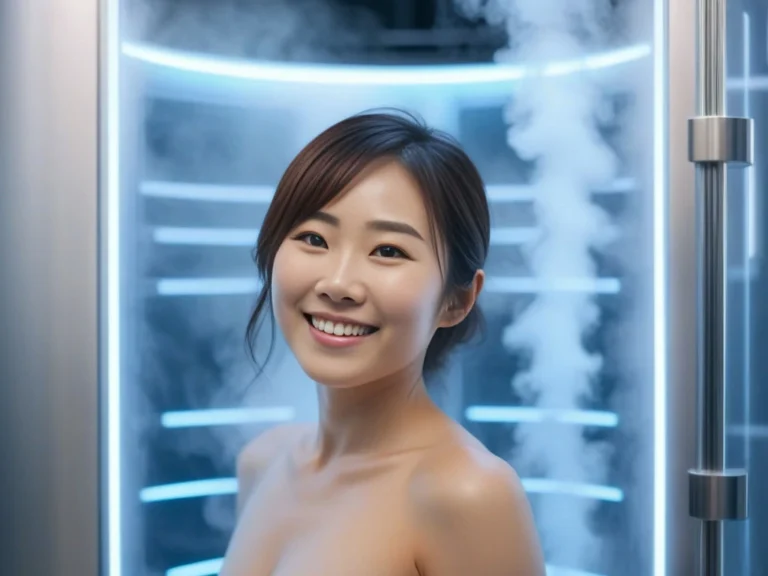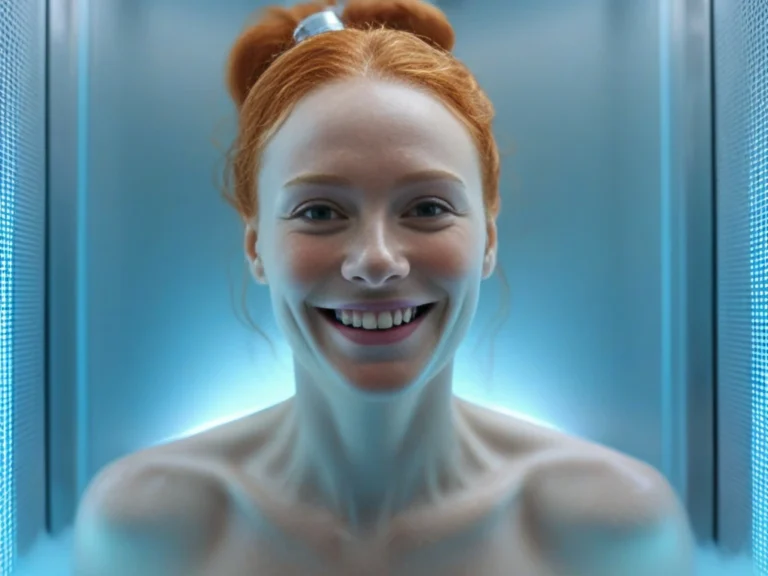Is Cryotherapy the Missing Piece in Modern Mental Health Care?
Cryotherapy, derived from the Greek words “cryo” meaning cold and “therapy” meaning treatment, is a therapeutic technique that involves exposing the body to extremely cold temperatures for a short period of time. This treatment has been used for centuries, with its origins dating back to ancient civilizations such as the Egyptians and Greeks who used cold therapy to treat various ailments. In recent years, cryotherapy has gained popularity as a holistic approach to improving physical health and well-being.
The physical benefits of cryotherapy are numerous. When the body is exposed to extreme cold temperatures, it triggers a physiological response known as vasoconstriction, where the blood vessels constrict and then dilate after the treatment. This process helps to reduce inflammation, increase circulation, and promote healing in the body. Cryotherapy has been shown to alleviate muscle soreness, reduce pain and swelling, improve athletic performance, boost metabolism, and enhance overall recovery.
Summary
- Cryotherapy is a treatment that involves exposing the body to extreme cold temperatures for a short period of time.
- Cryotherapy has been shown to have positive effects on mental health, including reducing symptoms of anxiety and depression.
- Cryotherapy can be used as a complementary treatment for mental health disorders, alongside traditional therapies.
- The science behind cryotherapy’s positive effects on mental health is still being studied, but it is thought to involve the release of endorphins and other neurotransmitters.
- Case studies have shown that cryotherapy can be an effective treatment for anxiety and depression, and it may also help reduce stress and burnout in the workplace.
The Connection between Cryotherapy and Mental Health
Mental health disorders such as anxiety, depression, and stress have become increasingly prevalent in today’s society. These disorders can have a significant impact on an individual’s quality of life and overall well-being. It is important to recognize that mental health is closely linked to physical health, and addressing both aspects is crucial for achieving optimal wellness.
Research has shown that there is a strong connection between physical and mental health. Physical exercise has long been recognized as an effective way to improve mental health by releasing endorphins, reducing stress hormones, and promoting a sense of well-being. Similarly, cryotherapy can have a positive impact on mental health by stimulating the release of neurotransmitters such as dopamine and serotonin, which are known to regulate mood and emotions.
Cryotherapy as a Complementary Treatment for Mental Health Disorders
Complementary treatments are non-traditional therapies that are used alongside conventional medical treatments to enhance their effectiveness and provide additional benefits. Cryotherapy can be used as a complementary treatment for mental health disorders due to its ability to improve physical health and promote overall well-being.
One of the key benefits of using cryotherapy as a complementary treatment for mental health disorders is its ability to reduce inflammation in the body. Inflammation has been linked to various mental health conditions, including depression and anxiety. By reducing inflammation, cryotherapy can help alleviate symptoms and improve overall mental well-being.
Furthermore, cryotherapy has been shown to have a positive impact on the autonomic nervous system, which plays a crucial role in regulating stress responses. By activating the parasympathetic nervous system and reducing sympathetic activity, cryotherapy can help individuals achieve a state of relaxation and reduce stress levels.
The Science behind Cryotherapy’s Positive Effects on Mental Health
The positive effects of cryotherapy on mental health can be attributed to the neurochemical changes that occur during the treatment. When the body is exposed to extreme cold temperatures, it triggers the release of endorphins, which are natural painkillers and mood enhancers. Endorphins help to reduce feelings of anxiety and depression, promote a sense of well-being, and improve overall mood.
In addition to endorphins, cryotherapy also stimulates the release of dopamine and serotonin, two neurotransmitters that play a crucial role in regulating mood and emotions. Dopamine is often referred to as the “feel-good” neurotransmitter, as it is associated with pleasure and reward. Serotonin, on the other hand, is known as the “happiness” neurotransmitter, as it helps to regulate mood, sleep, appetite, and social behavior.
By increasing the levels of these neurotransmitters in the brain, cryotherapy can have a positive impact on mental health by reducing symptoms of anxiety and depression, improving overall mood, and promoting a sense of well-being.
Cryotherapy for Anxiety and Depression: Case Studies and Results
Anxiety and depression are two of the most common mental health disorders, affecting millions of people worldwide. Traditional treatments for these conditions often involve medication and therapy, but cryotherapy has emerged as a promising alternative or complementary treatment option.
Several case studies have been conducted to evaluate the effectiveness of cryotherapy for anxiety and depression. In one study, participants with anxiety and depression underwent cryotherapy sessions three times a week for four weeks. The results showed a significant reduction in symptoms of anxiety and depression, as well as improvements in overall mood and well-being.
Another study examined the effects of cryotherapy on individuals with treatment-resistant depression. Participants underwent cryotherapy sessions five times a week for six weeks. The results showed a significant reduction in depressive symptoms, with some participants experiencing complete remission.
These case studies provide compelling evidence that cryotherapy can be an effective treatment option for individuals with anxiety and depression, either as a standalone treatment or as a complementary therapy alongside traditional treatments.
Cryotherapy and the Reduction of Stress and Burnout in the Workplace
Workplace stress and burnout have become increasingly prevalent in today’s fast-paced and demanding work environments. These conditions can have a significant impact on employee well-being, productivity, and overall job satisfaction. Cryotherapy has emerged as a potential solution to reduce workplace stress and burnout by providing employees with a quick and effective way to relax and rejuvenate.
Cryotherapy works by activating the body’s natural relaxation response, reducing stress hormones such as cortisol, and promoting a sense of calm and well-being. By incorporating cryotherapy into the workplace wellness program, employers can provide employees with a convenient and accessible way to manage stress and prevent burnout.
Several companies have already implemented cryotherapy as part of their workplace wellness programs, with positive results. Employees who have access to cryotherapy at work report reduced stress levels, increased energy and productivity, improved mood, and enhanced overall well-being. These benefits not only improve employee satisfaction and retention but also contribute to a healthier and more productive work environment.
Cryotherapy as a Non-Invasive Alternative to Traditional Mental Health Treatments
Traditional mental health treatments often involve medication and therapy, which can be invasive, time-consuming, and costly. Cryotherapy offers a non-invasive alternative to these treatments, providing individuals with a safe and effective way to improve their mental health without the need for medication or therapy.
Cryotherapy works by stimulating the release of endorphins, dopamine, and serotonin, which are natural mood enhancers. By increasing the levels of these neurotransmitters in the brain, cryotherapy can help alleviate symptoms of anxiety and depression, improve overall mood, and promote a sense of well-being.
Furthermore, cryotherapy is a quick and convenient treatment option that can be easily incorporated into daily routines. Sessions typically last for just a few minutes, making it an ideal choice for individuals with busy schedules. Additionally, cryotherapy is generally well-tolerated and has minimal side effects, making it a safe option for individuals who may not be able to tolerate or prefer to avoid traditional treatments.
The Accessibility and Affordability of Cryotherapy for Mental Health Care
While cryotherapy has gained popularity in recent years, accessibility and affordability remain barriers for many individuals seeking mental health care. Cryotherapy sessions can be expensive, especially if they are not covered by insurance. Additionally, access to cryotherapy facilities may be limited in certain areas, making it difficult for individuals to access this treatment option.
Efforts are being made to make cryotherapy more accessible and affordable for mental health care. Some organizations offer discounted or subsidized cryotherapy sessions for individuals with limited financial resources. Additionally, mobile cryotherapy units have been introduced in some areas, providing individuals with the convenience of receiving cryotherapy treatments in their own homes.
Furthermore, advancements in technology have led to the development of at-home cryotherapy devices, which are more affordable and accessible than traditional cryotherapy chambers. These devices allow individuals to experience the benefits of cryotherapy in the comfort of their own homes, without the need for expensive equipment or specialized facilities.
The Future of Cryotherapy in Mental Health Care: Potential Applications and Advancements
The future of cryotherapy in mental health care holds great promise, with potential applications and advancements that could revolutionize the field. One potential application is the use of cryotherapy in the treatment of post-traumatic stress disorder (PTSD). Research has shown that cryotherapy can help reduce symptoms of PTSD by activating the body’s relaxation response and promoting a sense of calm and well-being.
Advancements in cryotherapy technology are also on the horizon. Researchers are exploring the use of targeted cryotherapy, where specific areas of the body are exposed to cold temperatures to treat localized pain and inflammation. This could have significant implications for individuals with mental health disorders, as many experience physical symptoms such as muscle tension and headaches.
Additionally, advancements in cryotherapy technology may lead to the development of personalized treatment protocols based on an individual’s specific needs and preferences. This could involve adjusting the temperature, duration, and frequency of cryotherapy sessions to optimize results and improve overall mental well-being.
The Role of Cryotherapy in Modern Mental Health Care
In conclusion, cryotherapy has emerged as a promising complementary treatment for mental health disorders due to its ability to improve physical health and promote overall well-being. The positive effects of cryotherapy on mental health can be attributed to the neurochemical changes that occur during the treatment, including the release of endorphins, dopamine, and serotonin.
Cryotherapy has been shown to be effective in reducing symptoms of anxiety and depression, alleviating workplace stress and burnout, and providing a non-invasive alternative to traditional mental health treatments. While accessibility and affordability remain barriers, efforts are being made to make cryotherapy more accessible and affordable for mental health care.
The future of cryotherapy in mental health care holds great promise, with potential applications and advancements that could revolutionize the field. As more research is conducted and awareness is raised, it is important for individuals and organizations to consider cryotherapy as a complementary treatment option for mental health disorders. By incorporating cryotherapy into mental health care, we can improve the well-being of individuals and promote a healthier society as a whole.
FAQs
What is cryotherapy?
Cryotherapy is a treatment that involves exposing the body to extremely cold temperatures for a short period of time, typically 2-3 minutes, in order to promote healing and reduce inflammation.
How does cryotherapy work?
Cryotherapy works by triggering the body’s natural healing response. When the body is exposed to extreme cold, it responds by increasing blood flow and releasing endorphins, which can help reduce pain and improve mood.
What are the potential benefits of cryotherapy for mental health?
Some studies suggest that cryotherapy may be beneficial for treating depression, anxiety, and other mental health conditions. It may help reduce inflammation in the brain, improve mood, and increase feelings of well-being.
Is cryotherapy safe?
Cryotherapy is generally considered safe when performed by a trained professional. However, there are some risks associated with the treatment, including frostbite, skin burns, and hypothermia.
Who should not try cryotherapy?
Cryotherapy is not recommended for people with certain medical conditions, including heart disease, high blood pressure, and Raynaud’s disease. It is also not recommended for pregnant women or people with open wounds or skin conditions.
How much does cryotherapy cost?
The cost of cryotherapy varies depending on the location and the provider. A single session can cost anywhere from £20 to £100 or more.
Is cryotherapy covered by insurance?
Cryotherapy is not typically covered by insurance, as it is considered an alternative or complementary therapy. However, some providers may offer financing options or package deals to make the treatment more affordable.






